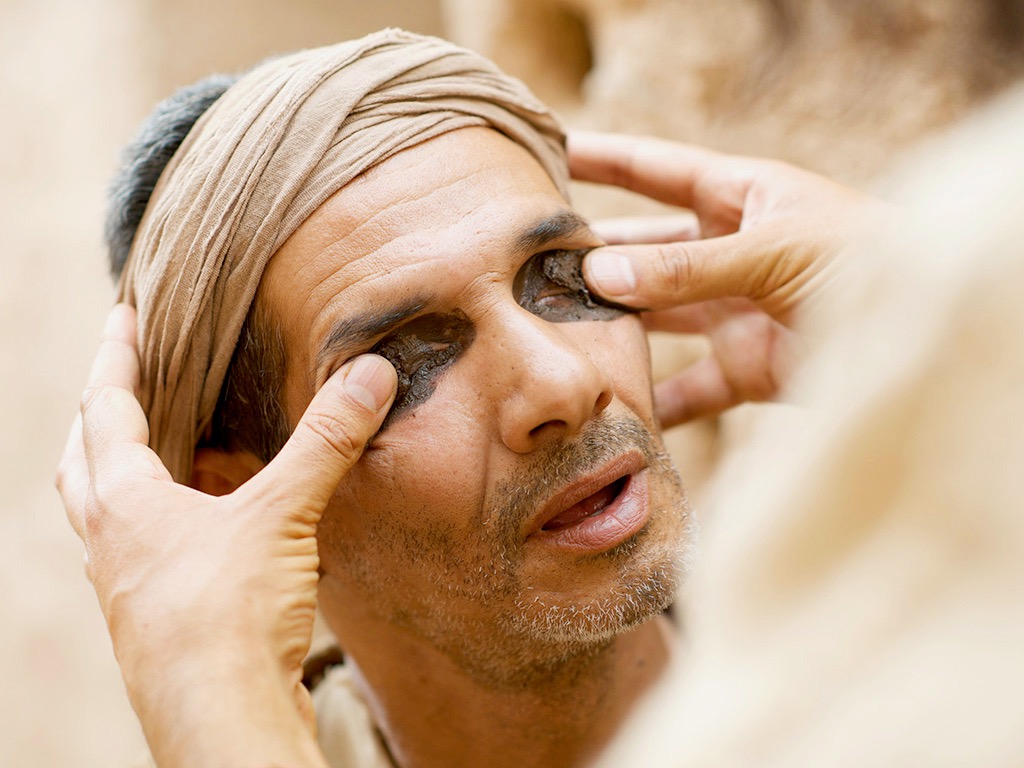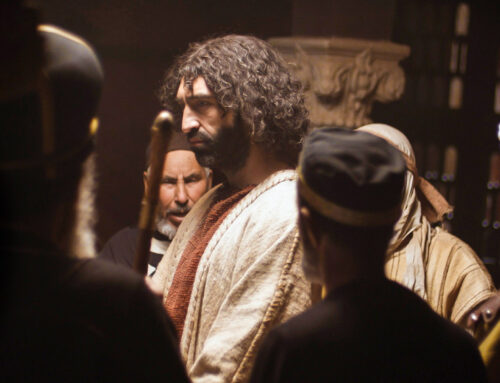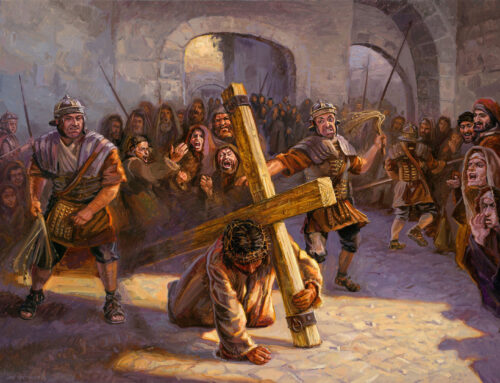As he went along, he saw a man blind from birth. His disciples asked him, “Rabbi, who sinned, this man or his parents, that he was born blind?” “Neither this man nor his parents sinned,” said Jesus, “but this happened so that the work of God might be displayed in him” (John 9:1-3).
So begins a story about a remarkable miracle and its impact on the community. (See the whole story in John 9.)
No conversation between the blind man and Jesus is recorded— no “Lord, heal me!” or “Do you want to see?” or “Tell me how long you’ve been blind.”
These things Jesus already knew. Instead, he spit on the ground, making mud, which he smeared on the blind man’s eyes, and told him to go wash in the Pool of Siloam. The man did what he was told, then went home, seeing for the first time in his life.
While he was busy exploring the world as a sighted man, the people around him were busy challenging Jesus and arguing among themselves over this healing.
His neighbors had really never known him as anything but “the blind beggar.” They couldn’t decide if this new man in the neighborhood was the blind beggar or if he just looked like him (vv 8-12).
The Pharisees were more concerned that the healing had occurred on a Sabbath than that a sightless man could now see. Some were convinced that Jesus could not be from God because he had broken the Sabbath; others argued that a sinner could not do such a miraculous sign (vv 13-16).
Not believing the man had been healed from blindness, the Pharisees called in the man’s parents and pelted them with questions. “Is he your son?” “Is he the one you say was born blind?” “How is it that he can now see?” But his parents would not say how their son was healed for fear that they would be kicked out of the synagogue if they acknowledged that the one who healed their son was the Messiah (vv 18-23).
The mind of the newly sighted man, however, was as clear as his eyes. He would not be marginalized by his neighbors, devalued by his parents, or bullied by the Pharisees. Although he still had not figured out for sure who Jesus was (that would come soon) he told the Pharisees, “Nobody has ever heard of opening the eyes of a man born blind. If this man were not from God, he could do nothing” (v 33).
Jesus had told his disciples that this man had been born blind so that “the work of God might be displayed in him” (v 3). A transformed man or woman displays the work of God in their joyful response to their gift and in the clarity such a transforming gift brings. In the days surrounding his healing this man was Exhibit A for God’s work in people’s lives. And in the days and years that followed we can expect that he lived for the glory of God, with a testimony on his lips and a purpose in his step.
Jesus continues to display his work through the people he transforms. He gives sight, insight, peace, strength, joy, clarity, purpose… No matter what he heals us from, he heals us to love, compassion, service, overcoming victory… And we can sing with this man-born-blind, “Once I was blind, but now I can see!”
Have you read the AD Chronicles by Bodie and Brock Thoene? This series of historical fiction focuses on the life and ministry of Jesus, powerfully written and featuring characters who move into your heart. Book 1, called First Light, introduces a young man named Peniel, who was born blind. Many years after meeting him I still think of him as a friend.
Photo Credit: Used by permission from frebibleimages.org, from the story, “Jesus Heals a Man Born Blind.”





Leave a Reply